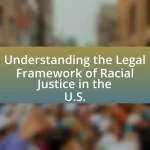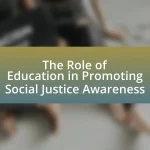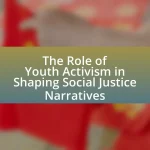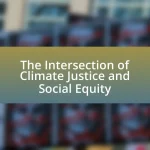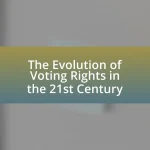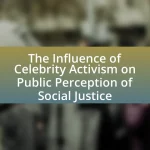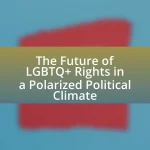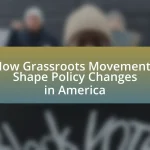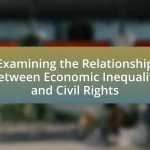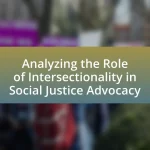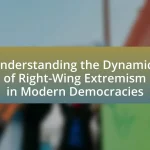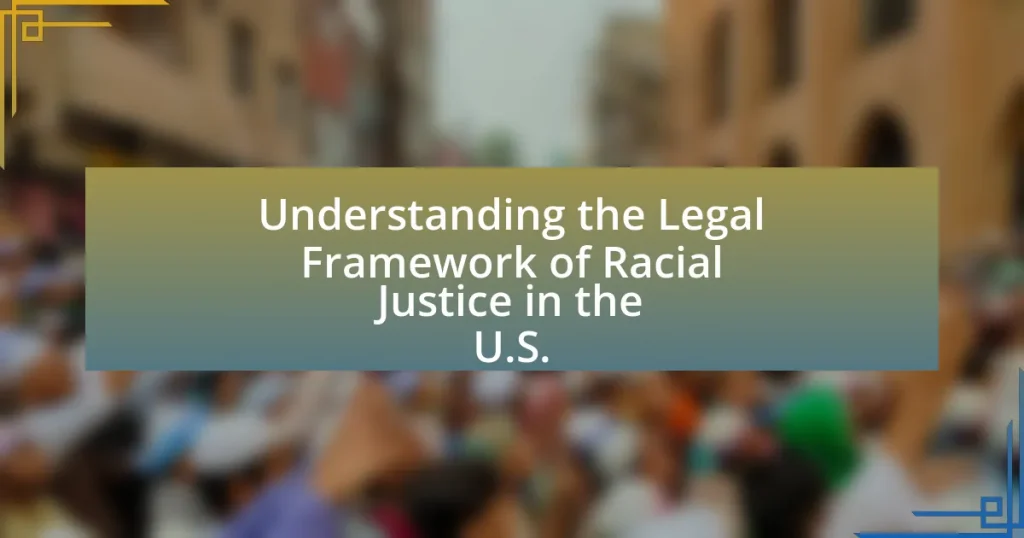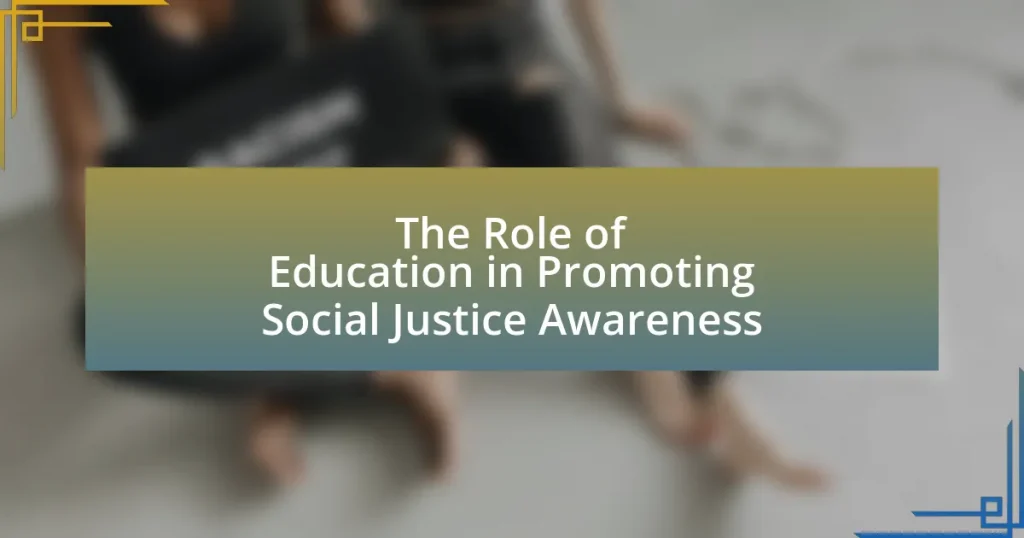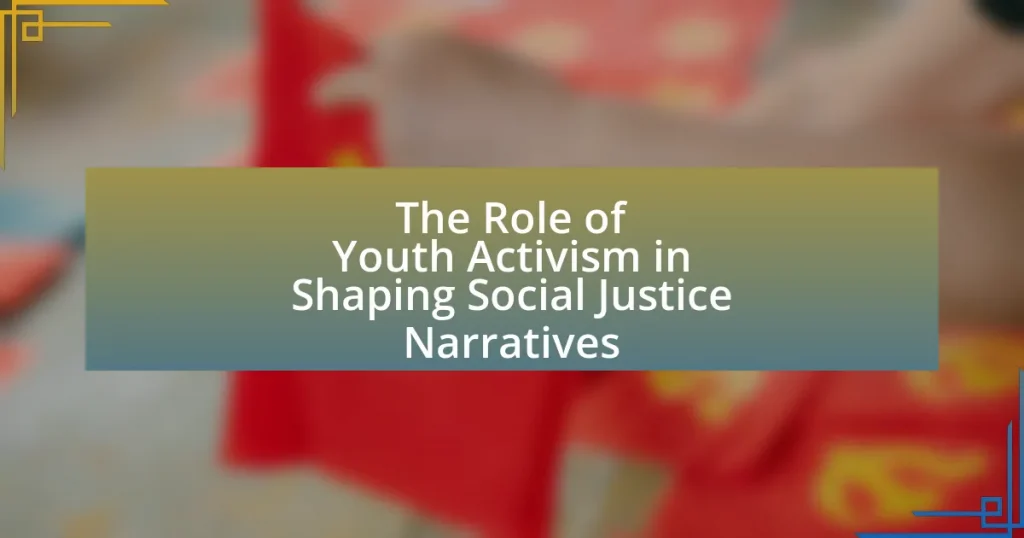Youth activism plays a pivotal role in shaping political ideologies by mobilizing young individuals to advocate for social change and influence policy decisions. This article examines the historical and contemporary impact of youth activism on political thought, highlighting key movements such as the Civil Rights Movement, anti-Vietnam War protests, and climate strikes. It explores how youth activism challenges traditional political structures, the unique perspectives young activists bring to discourse, and the barriers they face in political participation. Additionally, the article discusses strategies for enhancing youth activism’s effectiveness and the importance of collaboration with established organizations in driving meaningful political change.
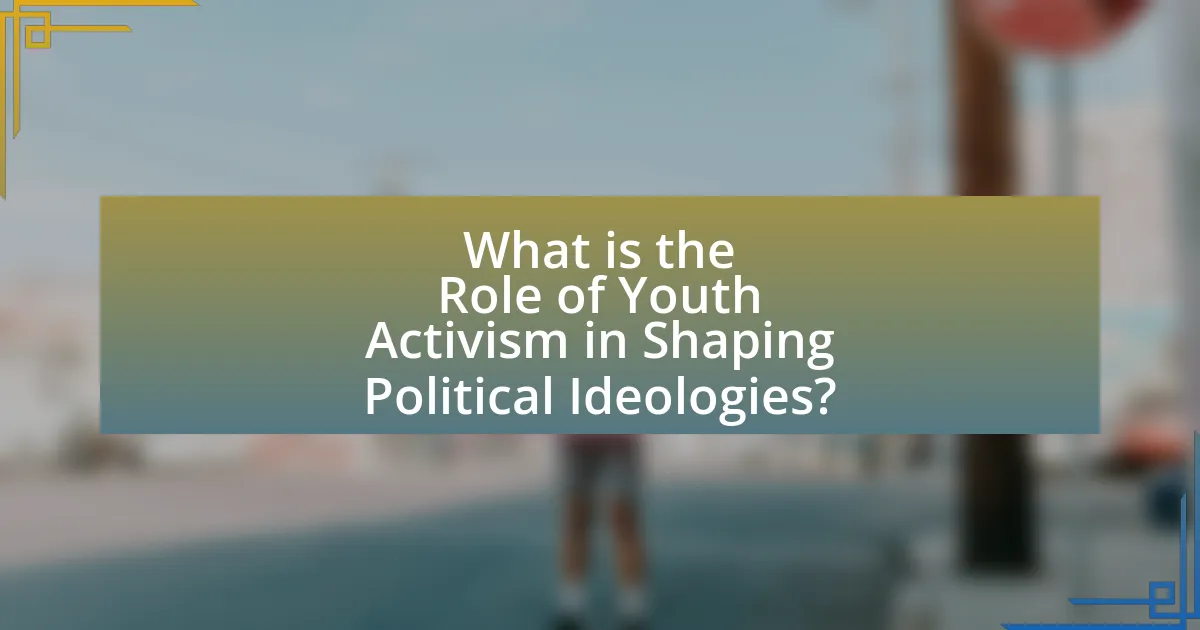
What is the Role of Youth Activism in Shaping Political Ideologies?
Youth activism plays a crucial role in shaping political ideologies by mobilizing young individuals to advocate for social change and influence policy decisions. This demographic often brings fresh perspectives and innovative ideas to political discourse, challenging established norms and pushing for progressive reforms. For instance, movements like the March for Our Lives, initiated by students in response to gun violence, have significantly impacted public opinion and legislative discussions on gun control in the United States. Additionally, youth-led climate strikes, inspired by figures like Greta Thunberg, have shifted the political landscape towards prioritizing environmental issues, demonstrating the power of young voices in advocating for urgent action. These examples illustrate how youth activism not only raises awareness but also directly contributes to the evolution of political ideologies by demanding accountability and fostering civic engagement among peers.
How has youth activism historically influenced political ideologies?
Youth activism has historically influenced political ideologies by mobilizing young people to advocate for social change, thereby shaping public discourse and policy. For instance, during the Civil Rights Movement in the 1960s, youth-led organizations like the Student Nonviolent Coordinating Committee (SNCC) played a crucial role in challenging segregation and promoting racial equality, which shifted the Democratic Party’s platform towards civil rights. Similarly, the anti-war protests during the Vietnam War, predominantly led by students, contributed to a growing anti-establishment sentiment and influenced the political landscape by pushing for a more progressive agenda. These movements exemplify how youth activism not only raises awareness but also directly impacts the evolution of political ideologies by demanding accountability and reform from established political entities.
What key movements exemplify youth activism’s impact on political thought?
Key movements that exemplify youth activism’s impact on political thought include the Civil Rights Movement, the anti-Vietnam War protests, and the climate strikes initiated by youth activists like Greta Thunberg. The Civil Rights Movement, particularly in the 1960s, saw young activists challenging racial segregation and advocating for equality, which significantly influenced U.S. legislation, including the Civil Rights Act of 1964. The anti-Vietnam War protests, driven largely by college students in the 1960s and 1970s, reshaped public opinion on U.S. foreign policy and contributed to a broader skepticism of government actions. More recently, the climate strikes, which began in 2018, mobilized millions of young people globally, pressuring governments to adopt more aggressive climate policies and highlighting the urgency of climate change in political discourse. These movements collectively demonstrate how youth activism can catalyze significant shifts in political ideologies and policies.
How have historical events shaped the political engagement of youth?
Historical events have significantly shaped the political engagement of youth by providing them with contexts that inspire activism and collective action. For instance, the Civil Rights Movement in the 1960s mobilized young people to advocate for racial equality, leading to increased youth participation in protests and voter registration drives. Similarly, the Vietnam War era saw widespread youth protests against military involvement, fostering a generation that prioritized anti-war sentiments and social justice. These events not only galvanized youth but also established frameworks for future political engagement, as seen in the rise of movements like Black Lives Matter and climate activism, which continue to draw on historical precedents of youth-led advocacy.
Why is youth activism important in contemporary politics?
Youth activism is important in contemporary politics because it drives social change and influences policy decisions. Young activists often bring fresh perspectives and innovative solutions to pressing issues such as climate change, racial justice, and education reform. For instance, the global climate strikes initiated by youth activists like Greta Thunberg mobilized millions and pressured governments to take more aggressive action on environmental policies. This demonstrates that youth activism not only raises awareness but also compels political leaders to respond to the demands of younger generations, thereby shaping political ideologies and priorities.
What unique perspectives do young activists bring to political discourse?
Young activists bring fresh, innovative perspectives to political discourse by prioritizing issues such as climate change, social justice, and equity. Their engagement often challenges traditional political narratives, emphasizing the urgency of addressing systemic inequalities and environmental crises. For instance, movements like Fridays for Future, initiated by Greta Thunberg, have mobilized millions globally, highlighting the need for immediate action on climate policies. This generational focus on sustainability and inclusivity reshapes discussions, pushing established political entities to reconsider their approaches and policies.
How does youth activism challenge traditional political structures?
Youth activism challenges traditional political structures by mobilizing young people to advocate for change outside established political channels. This generation often utilizes social media platforms to organize protests, raise awareness, and influence public opinion, effectively bypassing traditional media and political gatekeepers. For instance, movements like Black Lives Matter and Fridays for Future have demonstrated how youth-led initiatives can reshape political discourse and demand accountability from leaders. These movements have garnered significant attention, leading to policy discussions and legislative changes, illustrating the power of youth activism in disrupting conventional political processes.
What are the main forms of youth activism today?
The main forms of youth activism today include climate activism, social justice movements, digital activism, and political engagement. Climate activism, exemplified by movements like Fridays for Future, mobilizes youth to advocate for environmental policies and awareness. Social justice movements, such as Black Lives Matter, focus on racial equality and human rights, engaging young people in protests and advocacy. Digital activism leverages social media platforms to raise awareness and organize campaigns, allowing youth to connect globally. Political engagement involves young people participating in elections, lobbying, and grassroots organizing to influence policy decisions. These forms of activism are significant as they reflect the growing involvement of youth in shaping political ideologies and societal change.
How do social media platforms facilitate youth activism?
Social media platforms facilitate youth activism by providing accessible channels for communication, organization, and mobilization. These platforms enable young activists to share information rapidly, connect with like-minded individuals, and coordinate events or campaigns effectively. For instance, the use of hashtags on platforms like Twitter and Instagram allows youth to amplify their messages and reach a broader audience, as seen during movements like Black Lives Matter, which gained significant traction through social media engagement. Additionally, studies indicate that 70% of young people believe social media is an effective tool for raising awareness about social issues, demonstrating its impact on youth-driven activism.
What role do educational institutions play in fostering youth activism?
Educational institutions play a crucial role in fostering youth activism by providing a platform for critical thinking, civic engagement, and social awareness. Schools and universities often encourage students to participate in discussions about social issues, which cultivates a sense of responsibility and empowerment. For instance, research from the National Youth Rights Association indicates that students involved in school governance and activism are more likely to engage in community service and political activities later in life. Additionally, educational programs that focus on social justice and activism equip students with the knowledge and skills necessary to advocate for change, thereby reinforcing their role as active participants in democracy.
How does youth activism intersect with various political ideologies?
Youth activism intersects with various political ideologies by serving as a catalyst for change and influencing policy across the political spectrum. For instance, youth-led movements such as the climate strikes initiated by Greta Thunberg align with progressive ideologies that advocate for environmental justice and systemic reform. Conversely, youth activism can also manifest in conservative contexts, where young individuals mobilize around issues like gun rights or traditional values, as seen in movements like Students for Concealed Carry.
Research indicates that youth engagement in activism often reflects their socio-political environment, with studies showing that 70% of young people feel their activism is influenced by their political beliefs and the issues they prioritize, such as social justice, economic inequality, or climate change. This intersectionality highlights how youth activism not only embodies the values of specific political ideologies but also challenges and reshapes them, fostering a dynamic political landscape.
What ideological movements are most influenced by youth activism?
Youth activism significantly influences several ideological movements, particularly environmentalism, social justice, and political reform. For instance, the global climate movement, led by youth figures like Greta Thunberg, has mobilized millions to advocate for urgent climate action, demonstrating the power of youth voices in shaping environmental policies. Similarly, movements for racial equality, such as Black Lives Matter, have seen substantial youth involvement, driving discussions on systemic racism and police reform. Additionally, youth activism has played a crucial role in political reform movements, as seen in the mobilization of young voters during elections, which has shifted political landscapes in various countries. These examples illustrate how youth activism not only raises awareness but also catalyzes change within these ideological frameworks.
How do youth activists navigate ideological differences within movements?
Youth activists navigate ideological differences within movements by fostering dialogue and collaboration among diverse perspectives. They often create inclusive spaces for discussion, allowing individuals to express their views while emphasizing shared goals. For instance, youth-led organizations frequently employ consensus-building techniques to reconcile differing opinions, which helps maintain unity and focus on collective objectives. Research indicates that such approaches enhance group cohesion and effectiveness, as seen in movements like the climate strike, where activists from various backgrounds unite under a common cause despite differing ideologies.
What challenges do youth activists face in shaping political ideologies?
Youth activists face significant challenges in shaping political ideologies, primarily due to systemic barriers, lack of representation, and generational divides. Systemic barriers include institutional resistance from established political entities that often dismiss or undermine youth perspectives, limiting their influence. Additionally, youth activists frequently encounter a lack of representation in decision-making processes, which can lead to their ideas being overlooked or marginalized. Generational divides further complicate their efforts, as older generations may hold differing values and priorities, making it difficult for youth to gain traction for their ideologies. These challenges are evident in various movements, such as climate activism, where youth voices have been pivotal yet often struggle against entrenched political interests.
How do societal perceptions of youth impact their activism?
Societal perceptions of youth significantly impact their activism by influencing the level of support and legitimacy they receive from the broader community. When society views young people as capable and informed, it fosters an environment where their activism is taken seriously, leading to increased engagement and participation in social movements. For instance, the global climate strikes led by youth activists like Greta Thunberg have garnered widespread media attention and public support, demonstrating how positive perceptions can amplify their message and mobilize action. Conversely, negative stereotypes, such as viewing youth as irresponsible or uninformed, can undermine their efforts, resulting in diminished credibility and fewer opportunities for meaningful dialogue. Research indicates that youth activism is often more effective when societal attitudes are favorable, as seen in movements advocating for social justice and environmental change, where youth voices are increasingly recognized as vital contributors to political discourse.
What barriers do young activists encounter in political participation?
Young activists encounter several barriers in political participation, including lack of access to resources, limited political experience, and systemic age-related biases. These barriers hinder their ability to engage effectively in political processes. For instance, many young activists face financial constraints that limit their ability to organize events or campaigns, as highlighted in a study by the Center for Information & Research on Civic Learning and Engagement, which found that youth often lack funding compared to established political groups. Additionally, young individuals frequently experience skepticism from older political leaders, which can discourage their involvement and diminish their influence in decision-making processes. This age bias is evident in various political settings where youth voices are often marginalized, as reported by the United Nations in their Youth and Political Participation report.
What strategies can youth activists employ to enhance their impact?
Youth activists can enhance their impact by leveraging social media platforms to mobilize support and raise awareness. By utilizing platforms like Twitter, Instagram, and TikTok, activists can reach a broader audience, engage in real-time discussions, and share compelling narratives that resonate with their peers. Research indicates that social media campaigns can significantly increase participation in movements; for instance, the #FridaysForFuture movement, initiated by Greta Thunberg, successfully mobilized millions globally for climate action through effective online engagement. Additionally, youth activists can collaborate with established organizations to gain resources and credibility, thereby amplifying their message and influence.
How can collaboration with established organizations benefit youth activism?
Collaboration with established organizations can significantly enhance youth activism by providing access to resources, networks, and expertise. Established organizations often have funding, logistical support, and a wealth of experience that can empower youth activists to implement their initiatives more effectively. For instance, partnerships with organizations like the United Nations or local NGOs can offer training programs and mentorship opportunities, which have been shown to increase the impact of youth-led projects. Research indicates that youth activists who collaborate with established entities are more likely to achieve their goals, as they can leverage the credibility and influence of these organizations to amplify their voices and reach broader audiences.
What role does grassroots organizing play in effective youth activism?
Grassroots organizing is essential for effective youth activism as it empowers young individuals to mobilize their communities and advocate for change. This form of organizing fosters a sense of ownership and agency among youth, enabling them to identify local issues and develop tailored solutions. For instance, the 2018 March for Our Lives movement, initiated by students in response to gun violence, exemplifies how grassroots efforts can galvanize widespread support and influence policy discussions. Research indicates that grassroots movements often lead to higher engagement levels, with studies showing that youth-led initiatives can increase voter turnout and civic participation by up to 20%. Thus, grassroots organizing not only amplifies youth voices but also drives significant social and political impact.
How can youth activism lead to meaningful political change?
Youth activism can lead to meaningful political change by mobilizing large groups of young people to advocate for specific issues, influencing public opinion and policy decisions. For instance, the global climate strikes initiated by youth activists like Greta Thunberg have raised awareness about climate change, resulting in increased political pressure on governments to adopt more sustainable policies. According to a 2020 study by the Pew Research Center, 57% of young adults believe that activism can lead to significant change, demonstrating their belief in the power of collective action. Additionally, youth-led movements often utilize social media to amplify their messages, reaching wider audiences and engaging diverse demographics, which can shift political narratives and priorities.
What examples demonstrate successful outcomes of youth-led initiatives?
Successful outcomes of youth-led initiatives include the March for Our Lives movement, which effectively advocated for gun control legislation in the United States following the Parkland school shooting in 2018. This initiative mobilized thousands of young people, resulting in significant public awareness and legislative discussions around gun safety. Another example is the Fridays for Future climate strikes, initiated by Greta Thunberg, which galvanized millions of students worldwide to demand action on climate change, influencing political agendas and leading to commitments from various governments to address environmental issues. These initiatives demonstrate the power of youth activism in shaping political ideologies and driving social change.
How can young activists measure the effectiveness of their efforts?
Young activists can measure the effectiveness of their efforts by analyzing specific metrics such as engagement levels, policy changes, and community feedback. Engagement levels can be assessed through social media interactions, attendance at events, and participation in campaigns, indicating the reach and resonance of their message. Policy changes serve as a direct measure of impact, where activists can track legislative outcomes or shifts in public policy that align with their goals. Additionally, gathering community feedback through surveys or focus groups provides qualitative data on public perception and support for their initiatives. These methods collectively offer a comprehensive view of the effectiveness of activism in influencing political ideologies and driving social change.
What are the best practices for engaging youth in political activism?
The best practices for engaging youth in political activism include fostering inclusive environments, utilizing digital platforms, and providing education on civic rights and responsibilities. Inclusive environments encourage diverse participation, allowing youth from various backgrounds to feel valued and heard. Digital platforms, such as social media, facilitate outreach and mobilization, as evidenced by the success of movements like March for Our Lives, which effectively used social media to engage young people. Education on civic rights equips youth with the knowledge necessary to understand their role in democracy, as demonstrated by programs like Generation Citizen, which has shown that informed youth are more likely to participate in political processes.
